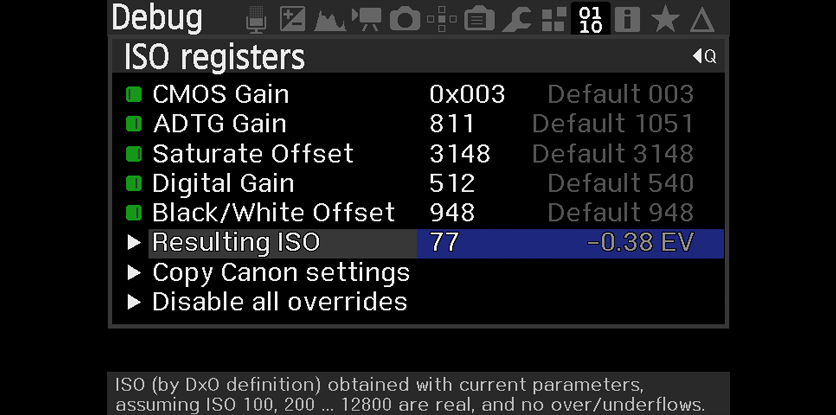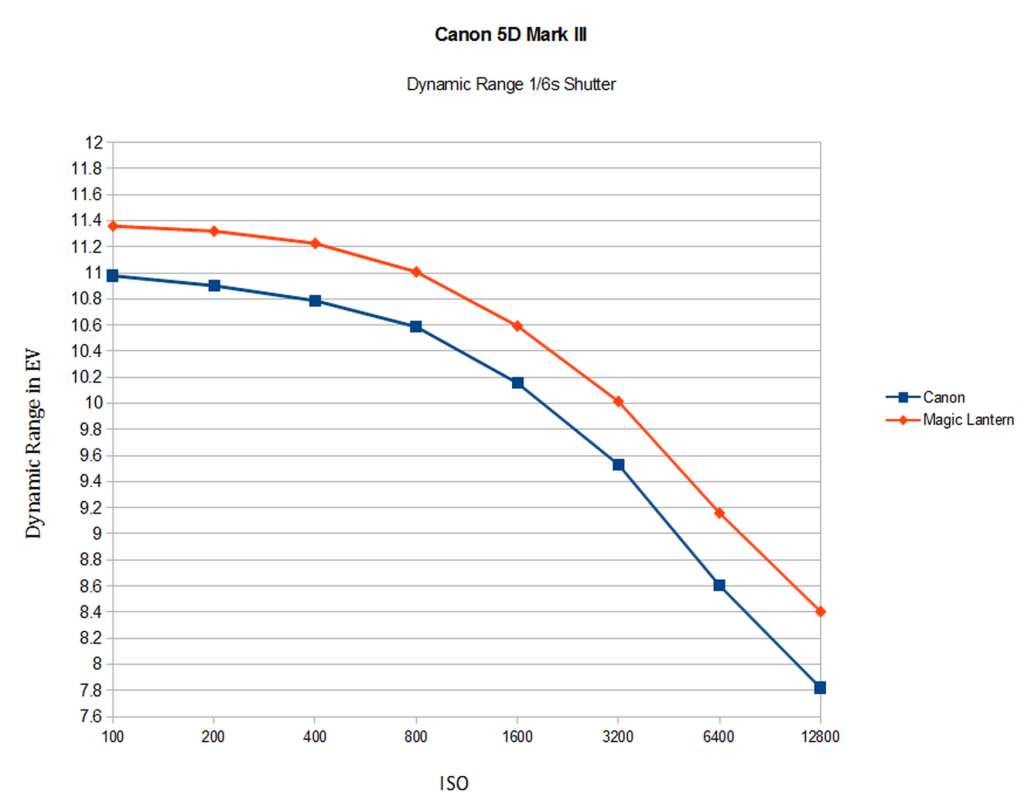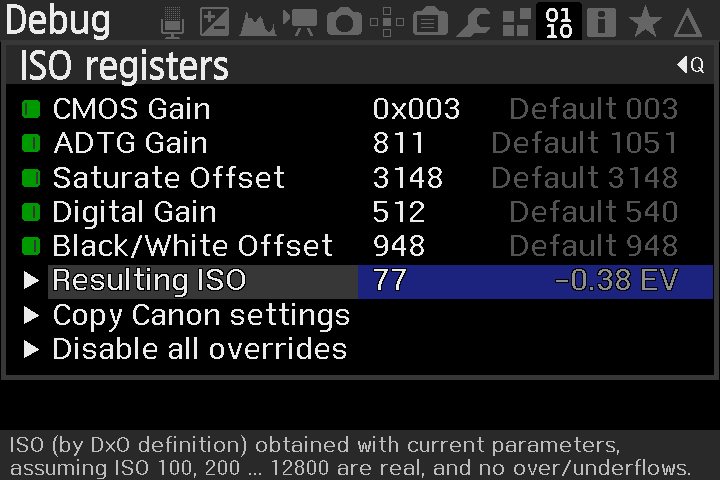
The saga of the Magic Lantern raw hack was riveting, over the space of a couple of weeks we witnessed development initiating from the possibility of a (relatively slow) raw burst read out from the 5D Mark III, to full HD up to 25p continuous recording (30p recording also using careful considerations). It truly transformed the 5D Mark III, making it the only full frame raw video enabled camera.
Magic Lantern has continued groundbreaking development, enabling raw on other older Canon DSLRs, as well as exploring the potential of HDR video using dual ISO recording.
The latest news? Half stop boosted dynamic range for the 5D Mark III. It’s currently in the early stages of research, with no public release or sample images. It works by seemingly tapping into the safe margin Canon implemented into their sensors to ensure true whites.
Magic Lantern has constructed a concise FAQ document that can be fully explored here. Below I’ve quoted the important stuff.
So, what’s all this stuff about “sensor update”?
Just a small improvement in dynamic range in photo mode (around 0.35-0.5 stops). We were able to fine-tune the amplifier gains in order to squeeze a little more highlight detail.
Only 0.5 EV? That’s way too small!
Yes. You may take a look at Dual ISO (which will get an additional ~0.3-stop boost with this “sensor update”; also resolution issues were largely solved), or you may consider switching to Nikon.
Wait a minute, that means less noise, right?
Well, it means you get a little more detail in highlights. This doesn’t mean less noise per se (the new ISOs will be just as noisy in shadows as the old ones), but it will let you shift the exposure to the right by 1/3 or 1/2 EV and collect more photons. This will result in lower noise.
For example, on 5D Mark III I could lower the ISO by 0.37 stops from 100, resulting a new ISO 77.
How exactly are you getting more highlight detail compared to Canon firmware?
The signal from the sensor seems to be amplified in 2 stages: a CMOS amplifier (which operates in full stops – powers of 2 – and we have tweaked it when implementing Dual ISO) and an ADTG amplifier which can be configured in finer increments. After these two stages, the signal is digitized (with an ADC), probably tweaked digitally, and saved to CR2. We have noticed the ADTG amplifier tends to run a little “hot” (that means, it gets saturated a little too early – nothing to do with temperature).
To get the extra highlight detail, one has to reduce the gain for the ADTG amplifier until the ADC will no longer be saturated. At this point, the white level (maximum recorded level in the raw file) will begin to decrease and no more detail will be recovered (since now the CMOS itself or the CMOS amplifiers will get saturated instead).
To play with these gains, scroll down to the research tools section.
Any side effects?
None yet.
Will it work on my camera?
– If you have a 550D or newer camera, it will most likely work.
– If you have a 7D, no idea yet.
– If you have a 5D Mark II, 50D or 500D, don’t get too excited. I’ve barely got 0.15 stops of improvement on 5D2.
– Confirmed working on 5D3, 550D, 600D, 650D, 700D, 60D, 6D and (although not as well) 5D2/500D.


























